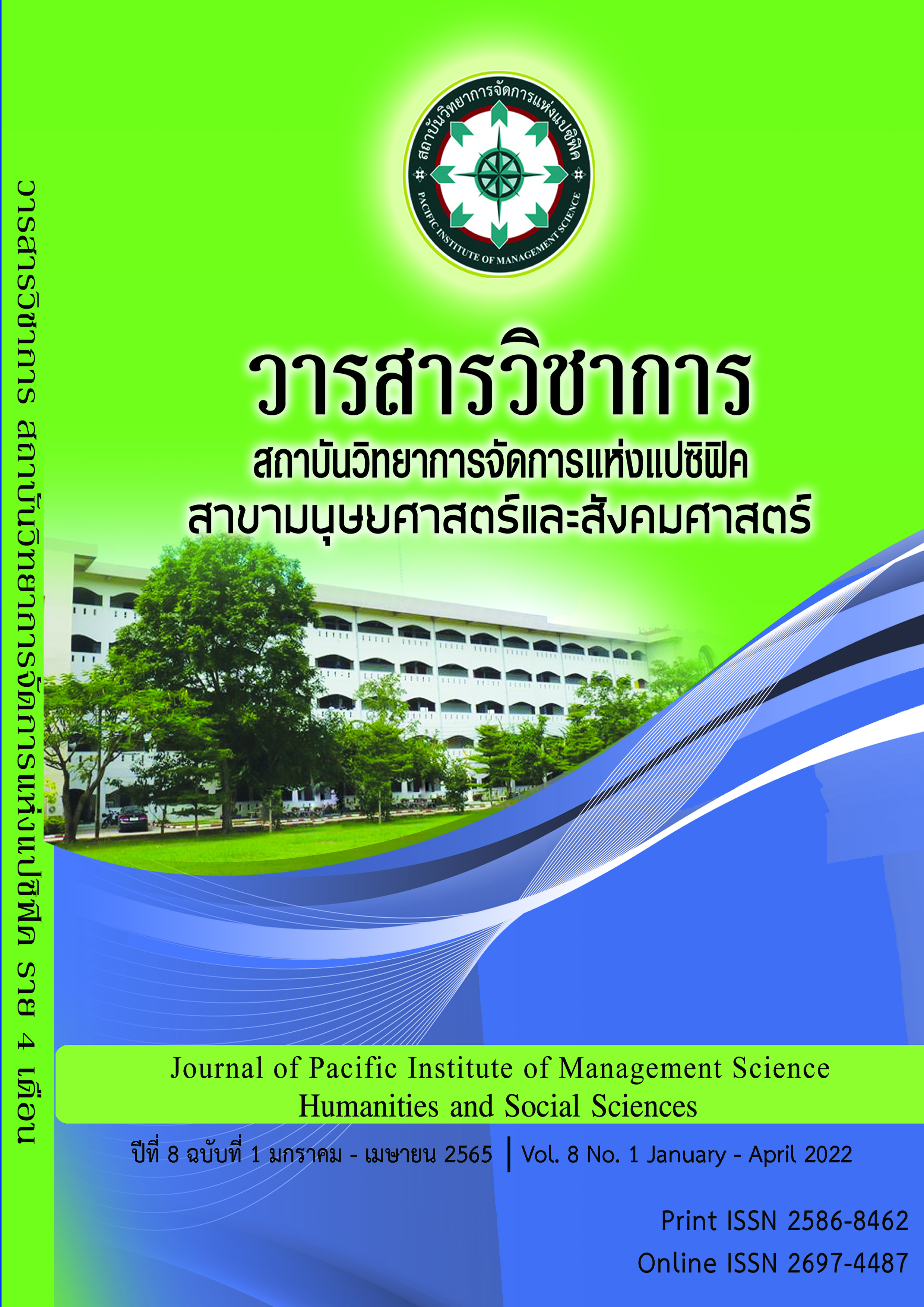Problems related to copyright ownership under the Copyright Act B.E. 2537
Keywords:
owner, copyright, piracyAbstract
This research aims to To study copyright ownership criteria according to the Copyright Act B.E. The nature of copyright ownership corresponds to the level of protection that applies to copyrighted works? The data obtained from literature reviews and in-depth interviews with specific sampling methods were used. Let's analyze the problems and effects of being the owner of copyright. Studies have shown that copyright is associated with creative work. and provide protection as soon as the creator the job was successful Even if there is no advertising and copyright that has the effect of protecting the copyrighted work. when advertising In addition, the acquisition of copyright is also obtained by received or received a transfer or by inheritance copyrighted work As such, the copyrighted work There are multiple owners. Copyright infringement is punishable by civil and criminal penalties in all cases. without determining the behavior nature of action Infringement volume and revenue Therefore, it provides protection to a higher standard than stipulated in the Intellectual Property Rights Agreement relating to trade. And it is not proportional to the circumstance of the offense and is not in accordance with the intent of penal law and is inconsistent with the theory of criminological punishment. Affects the human rights of people in the whole society in terms of freedom, property, education, development, and the management of the use of assets is inefficient. Determine the ownership of copyright Term of copyright Termination of the copyright owner and imposes penalties in each case of copyright infringement. and determine the behavior of the offense
References
จรัล โฆษณานันท์. (2544). นิติปรัชญา.กรุงเทพมหานคร. สำนักพิมพ์มหาวิทยาลัยรามคำแหง
จรัญ โฆษณานันท์. (2545). สิทธิมนุษยชนไร้พรหมแดน ปรัชญา กฎหมาย และความเป็นจริงทาง สังคม.กรุงเทพฯ : สำนักพิมพ์นิติธรรม
ธีระพงษ์ วิกิตเศรษฐ. (2546). จุลเศรษฐศษสตร์ : ทฤษฎีและการประยุกต์. พิมพ์ครั้งที่ 3 กรุงเทพ มหานคร : โรงพิมพ์แห่งจุฬาลงกรณ์มหาวิทยาลัย
นวลจันทร์ ทัศนชัยกุล. (2541). อาชญากรรม (การป้องกัน : การควบคุม). กรุงเทหมหานคร : คณะสังคมศาสตร์ มหาวิทยาลัยเกษตรศาสตร์, พรทิพย์การพิมพ์
พจนานุกรมฉบับราชบัณฑิตยสถาน พุทธศักราช 2525
พรชัย ขันตี และคณะ. (2543). ทฤษฎีและงานวิจัยทางอาชญาวิทยา. กรุงเทพ : บุ๊คเน็ท
พรเพชร วิชิตชลชัย. (2532). ปัญหาความล่าช้าของการพิจารณาคดีในชั้นศาล. วารสารกฎหมาย ปีที่ 13 ฉบับที่ 1
พระยานิติศาสตร์ไพศาล. (2495). ประวัติศาสตร์กฎหมายไทย. พิมพ์ครั้งที่ 2 กรุงเทพมหานคร : มหาวิทยาลัยธรรมศาสตร์
พิชัย รัตตกุล. 2530. สัมภาษณ์. หนังสือพิมพ์ไทยรัฐ. 19 พฤษภาคม 2532
ภราดร ปรีดาศักดิ์. (2556). หลักเศรษฐศาสตร์จุลภาค. พิมพ์ครั้งที่ 4 กรุงเทพมหานคร : สำนักพิมพ์มหาวิทยาลัยธรรมศาสตร์
H.L.A.Hart. (1968). Punishment and Responsibility. (Oxford : Clarendon Press)
Herbert L.Packer. (1968). The Limits of The Criminal Sanction (California : Stanford University Press)
Nigel Walker. (1980). Punishment, Danger and Stigma (Oxford : Basil Blackwell)
Peter Drahos. (1996). A Philosophy of Intellectual Property. (Hampshire : Ashgate Publishing Limited).
Peter K. Yu. (2007). Reconceptualizing Intellectual Property Interests in a Human Rights Framework. Michigan Staye University College of Law
Stephen M.Stewart. (1983).International Copyright and Neighbouring Rights
Downloads
Published
Issue
Section
License
Copyright (c) 2022 Pacific Institute of Management Science

This work is licensed under a Creative Commons Attribution-NonCommercial-NoDerivatives 4.0 International License.
บทความที่ได้รับการตีพิมพ์เป็นลิขสิทธิ์ของ สถาบันวิทยาการจัดการแห่งแปซิฟิค
ข้อความที่ปรากฏในบทความแต่ละเรื่องในวารสารวิชาการเล่มนี้เป็นความคิดเห็นส่วนตัวของผู้เขียนแต่ละท่านไม่เกี่ยวข้องกับสถาบันวิทยาการจัดการแห่งแปซิฟิค และคณาจารย์ท่านอื่นๆในสถาบันฯ แต่อย่างใด ความรับผิดชอบองค์ประกอบทั้งหมดของบทความแต่ละเรื่องเป็นของผู้เขียนแต่ละท่าน หากมีความผิดพลาดใดๆ ผู้เขียนแต่ละท่านจะรับผิดชอบบทความของตนเองแต่ผู้เดียว







